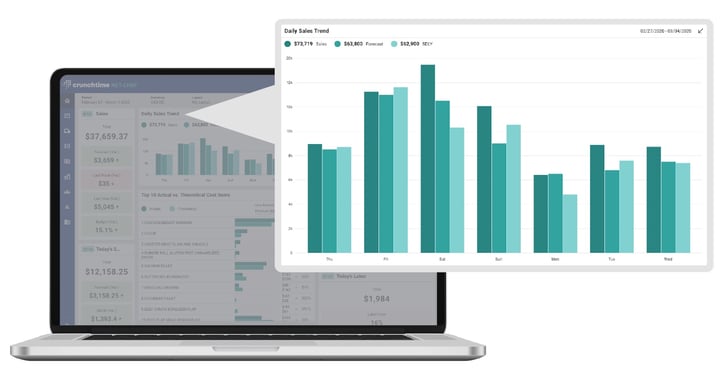
- Home
- Crunchtime Blog
- The ROI of Ops Excellence: How Restaurants Can Measure the Value of Improved Inventory Management
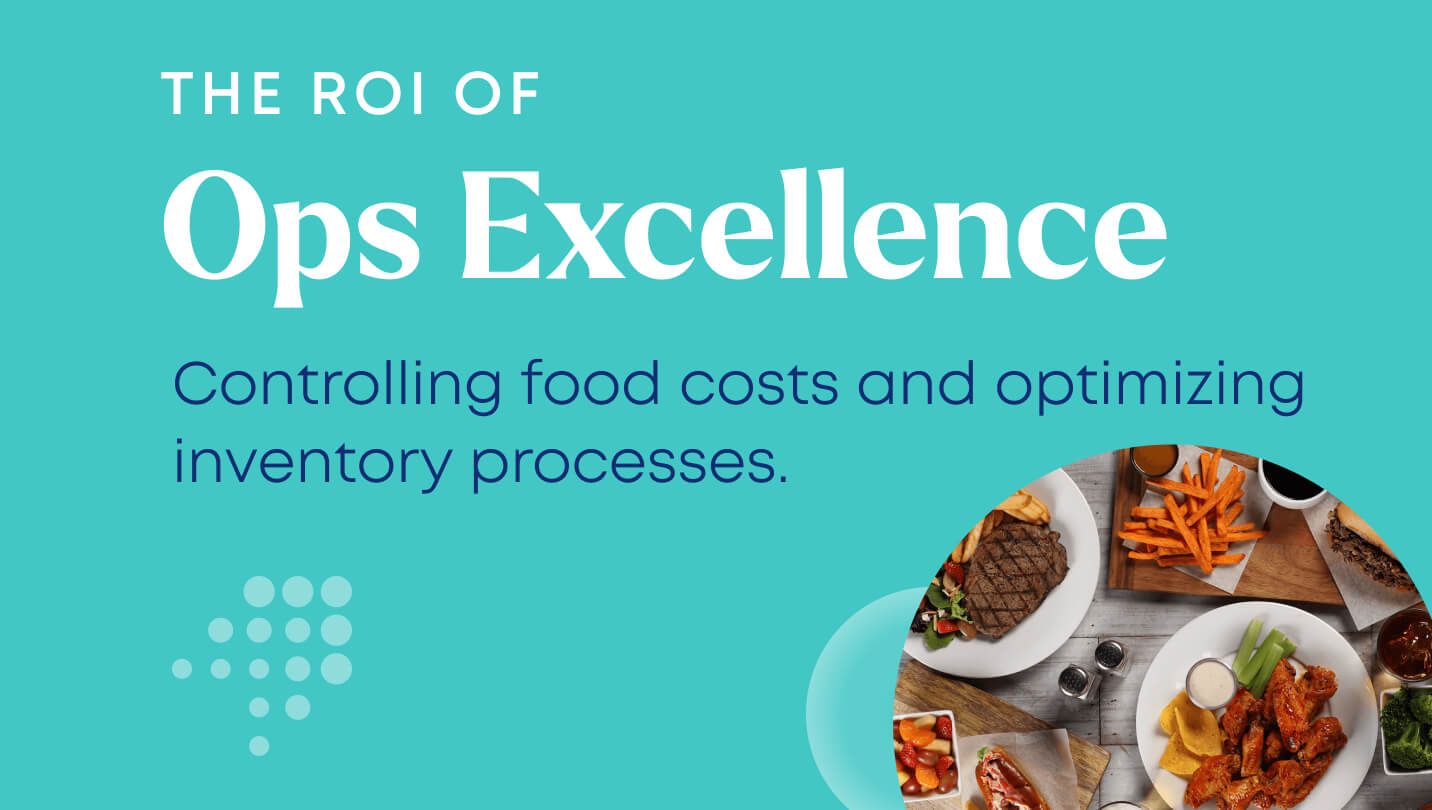
The ROI of Ops Excellence: How Restaurants Can Measure the Value of Improved Inventory Management
The restaurant industry runs on razor-thin margins, and food is one of the largest expenses for operators today. The rising cost of food has placed additional strain on operators worldwide, as it has become increasingly expensive for restaurants to produce the same menu items.
Saving small percentages on food costs can have a tremendous financial impact, especially on multi-location chains. If a 20-restaurant chain with sales of $20M per year can reduce food costs by 2% of total revenue, it will increase annual profits by $400K, without needing a single extra customer to come through its front door.
As restaurant brands kick off their strategy planning for 2024 and make important investment decisions, prioritizing operations and cost control is essential.
Restaurants should track these key areas to see how better inventory optimization impacts profitability:
- Food Costs - Close the gap between actual vs. theoretical costs
- Inventory Counts - Always know what stock is on-hand, from ordering to depletion
- Identifying Waste - Find and track sources of waste
- Smart Ordering - Only order the amounts needed
- Reconciling Invoices - Ensure all invoices and orders are correct
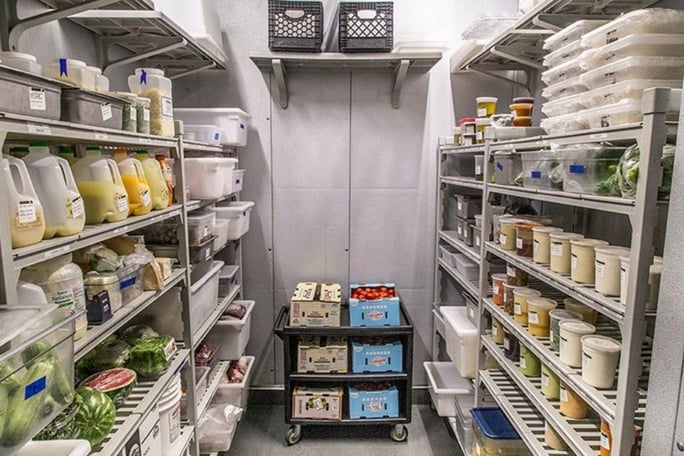
Food Costs - Close the gap between actual vs. theoretical costs
Reducing your food costs is one of the best ways to drive profit dollars to the bottom line, but it is no simple task. 92% of operators say that food costs pose a significant challenge for their business. It is no surprise that many restaurants are turning to technology to help lower their food costs and identify the biggest “profit leaks” in their operation.
The typical range for food costs in a restaurant is between 28% and 35% of revenue, but there is no universal food cost percentage that guarantees profitability for a restaurant. In reality, every restaurant should calculate its own unique percentage based on its menu items, local market prices, overhead expenses, and other factors. One of the best ways to evaluate your cost control is by calculating the actual vs. theoretical variance (AvT).
Theoretical food cost is what a restaurant’s food costs should be, based on current inventory costs of all ingredients for the meals sold, and assuming perfect portions, no breakage, and no shrinkage. Once you know your restaurant’s theoretical food cost for each menu item, you can compare it to the actual food cost, which is the total cost of all the food that your restaurant used during a given sales period. The variance is the difference between your actual and theoretical costs, which is the true measure of efficiency in food cost control. Reducing this variance to its lowest possible point is the goal of optimizing your restaurant’s food costs.
Restaurants should calculate their AvT based on the cost of ingredients and the usage of each ingredient as menu items are sold.
- You might find that items like cheese, beef, or avocados represent the greatest dollar variance from your theoretical product cost.
- Restaurants should also calculate the AvT of each menu item.
With a clear understanding of the highest and lowest margin items, restaurants can analyze and optimize their menus for greater profits. While this might seem like an obvious tactic for boosting profitability, studies show that only 55% of restaurant brands consider cost inflation in their menu architecture. In today’s uncertain economy, neglecting food costs can be detrimental to a restaurant’s bottom line. Restaurants that invest in tools for profitability will have a competitive edge that others will struggle to achieve.
Inventory Counts - Always know what stock is on-hand, from ordering to depletion
Do you know how much of an item is in your walk-in freezer at any point of the day? Do you know how much food is typically spoiled at the end of each week? Many restaurants lack this visibility because managing inventory can be time-consuming and labor-intensive.
You might find that your teams spend hours validating inventory each day, yet your inventory counts are constantly off. This is a common issue for restaurants that lack a real-time status of stock as products are sold throughout the day. An integrated inventory system should connect to your point-of-sale (POS) system and accurately track perpetual inventory levels at all times, saving your team significant time and effort. In today’s tight labor market, it is a huge advantage for restaurants to be able to accomplish more work with a smaller team.
Operators can measure the value of automation by tracking the amount of time employees spend on inventory tasks each day.
- If a restaurant manager makes $25 per hour and they spend a total of 30 hours each month on counting inventory, we can calculate the cost to complete one cycle of inventory counts each month = $25 / hr X 30 hrs/cycle = $750.
-
- Over the course of 12 months, this number adds up to $9,000 per year. If the store has 100 locations that each spend this amount of time on inventory counts each month, that number is now multiplied to $900,000 per year.
- Over the course of 12 months, this number adds up to $9,000 per year. If the store has 100 locations that each spend this amount of time on inventory counts each month, that number is now multiplied to $900,000 per year.
- Now, imagine if this restaurant reduced the time spent on inventory counts to only 8 hours per month. The cost to complete inventory counts each month is now $200 per month at this store, which equates to $2,400 per year at the single store level, and $240,000 per year for all 100 locations.
- This time cost savings is well over half a million dollars per year for this restaurant brand.
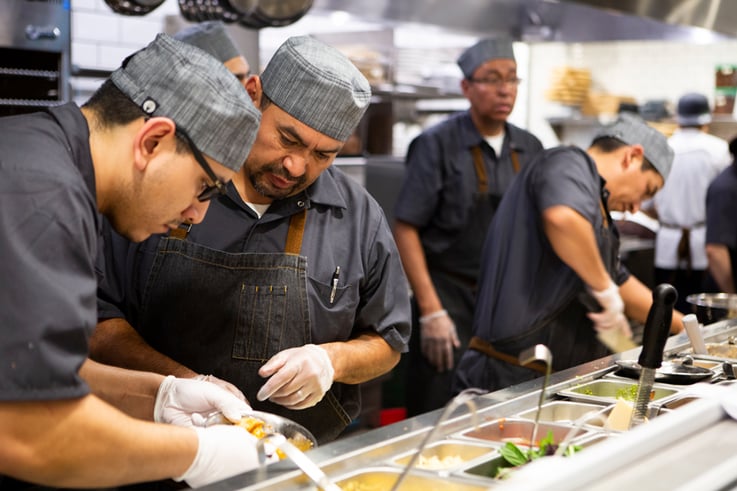
Identifying Waste - Find and track sources of waste
Restaurants often inadvertently immobilize their cash flow by keeping more inventory on hand than they actually need, resulting in expensive waste.
Powerful cost savings can be achieved by paying attention to order quantities and tracking waste. An international study found that for every $1 restaurants invested into programs to reduce kitchen food waste, they saved $7 in operating costs, on average.
Another study found that commercial kitchens typically waste 4% to 10% of the food they purchase before it ever reaches the customer’s plate. The data supports the high prevalence of waste, but it can be difficult for restaurants to know exactly how to address this issue, which highlights one of the challenges faced by restaurants in measuring the ROI of inventory software.
Without an integrated inventory system, it is nearly impossible to track waste. By constantly tracking your stock levels, ingredients, recipes, usage levels, and sales, your system should be able to determine if the waste was a result of spoilage, incorrect preparation, theft, data errors, or vendor issues.
Your manager should be able to log in to the inventory system and see that $200 of waste was due to prep errors during a given week. This information might indicate that additional training in the kitchen is needed, or that they should revisit the recipe cards for certain menu items. The savings from reducing waste can compound quickly for restaurants with multiple locations.
Smart Ordering - Only order the amounts needed
To avoid waste, restaurants should aim for precision ordering. Ordering the optimal quantities requires timely, accurate data on stock levels, an integrated sales forecast, and a clear understanding of waste. Oftentimes, when restaurants lack this data, managers will place orders based on “gut feeling.” In today’s volatile business climate, this is not a viable strategy for growth.
Your inventory system should automatically generate a sales forecast and suggested order amounts based on historical data and other key factors. With system-generated orders, your manager can automatically create and submit an accurate order with your restaurant’s approved vendors when stock levels are low. By not overstocking your shelves, you can increase your restaurant’s cash flow and save your managers a significant amount of time each month.
Are you confident that you're paying the expected price for every item? Do your suppliers often surprise you with substitutes?
By electronically integrating with your vendors, your inventory system should automatically import and reconcile your invoices with your chosen suppliers.
Frequent changes in prices or suppliers can complicate this process, but using a business invoice template can help businesses maintain consistency. This makes it easier for your systems to identify and highlight discrepancies. Also, these templates are quick to update and customized according to your specific needs. Even if you're invoicing on the go, templates offer a professional and streamlined method that ties directly into your inventory management.
Mobile apps or tablets can be used to scan inventory as shipments arrive, instantly updating your inventory counts. Streamlining and digitizing inventory processes increases accuracy and reduces the administrative burden on your managers.
For even greater time and money savings, an inventory system can compare your agreed prices to your paid prices, and highlight any discrepancies. This will help prevent many time-consuming errors that often happen during ordering and reconciliation.
When your preferred ingredient is out of stock with your usual vendor, an integrated inventory platform can instantly show you available alternatives from other vendors. The ability to shop this marketplace of vendors and goods helps make restaurants more resilient and responsive to fluctuations in the supply chain and economy.
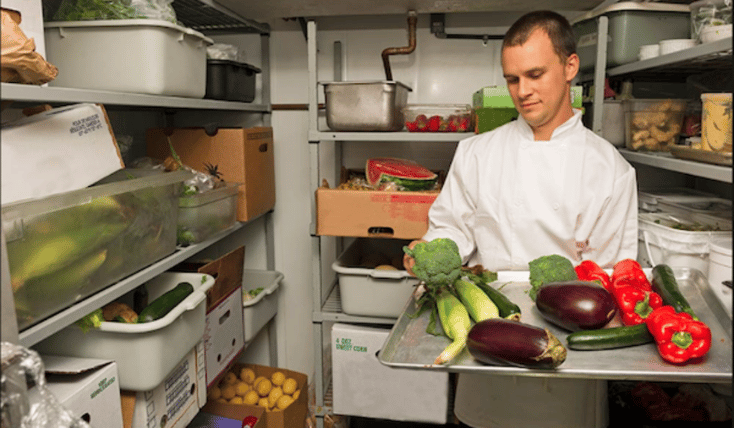
Restaurants often struggle to know which investments will drive the most impact and yield the greatest value. As food and labor costs continue to rise, prioritizing initiatives around lowering food costs and automating inventory is a worthwhile investment that will not only pay for itself, but provide distinct returns for many years to come.
Armed with the information outlined above, you can confidently build a holistic business case that demonstrates how you can save money, reallocate employee time, increase inventory optimization, and achieve operational excellence. For restaurants with multiple locations, automation at scale quickly compounds the ROI.
Though there are some challenges faced by restaurants in measuring the ROI of inventory software, we're here to help guide you. If you’re ready to learn more about the ROI of inventory software, get in touch with us for a customized demo. We'll explore specific strategies to increase the ROI of inventory software in restaurants.
Stay tuned for the next part of this series, where we’ll focus on the ROI of completing work correctly and on time, to see how improving operations execution can positively impact customer experiences and your bottom line.
Share this post
Related


Three Ways to Improve Your Inventory Management as You Scale

